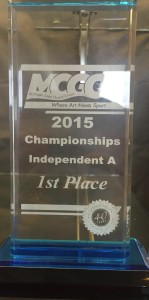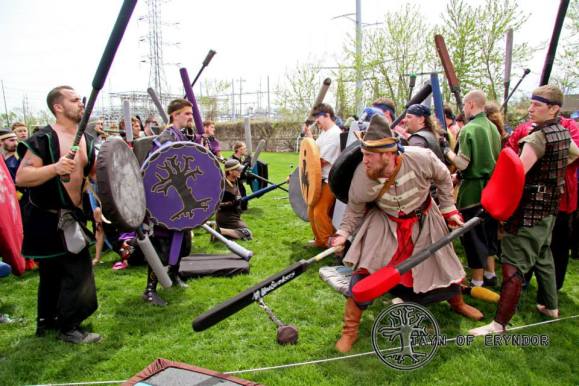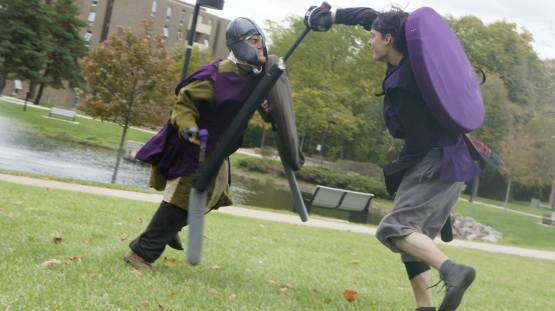Pete Kohnen is the coach for the men’s Rugby Club at Oakland University. During his first year as coach, he saw tremendous growth in the number of new members and in the development of the team as a whole. Kohnen spoke with us about his first year as coach and what it means to coach a team at the Division II level.
What got you involved with coaching and how did you end up coaching for a club sport at Oakland University?
I’ve been coaching in some capacity since I was a freshman in high school back in 1999. I was coaching little league football back then. I did that for the four years I was in high school then started coaching middle school football and track while I was in college.
After college, I started playing rugby and about a year after I started playing, I helped start a high school rugby program in Akron, Ohio. I spent a few years in Ohio before moving back to Michigan and took a break from coaching to focus on playing for the Detroit Tradesmen Rugby Team. After my body was no longer able to sustain the high level of play that Division I Men’s rugby requires, I hung up the cleats and started focusing on coaching. I was on the coaching staff for the Tradesmen for about a year and a half and spent most of that time with their women’s team.
About that time, one of OU’s graduates who was playing for the Tradesmen informed me that the OU team was looking for a coach, and since I was going to be enrolling at OU, I decided to see if I would be a good fit for the OU program.
I’m going back to school to become a teacher, so being a coach requires a similar skill set, so this is really an opportunity to combine two things that I am really passionate about.
What was it like starting out with OU Rugby and what were your goals coming in?
Becoming the head coach of a college program was a little intimidating at first. Up until now, I had never coached a high level men’s club, and I had the added pressure of having the referral from a team mate so I didn’t want to let him down. The guys on the team were very welcoming and I’ve seen firsthand how much of a brotherhood the team really is. I am happy to be a part of this family.
As a coach (and a teacher soon) my primary goal is always to be a source of encouragement. Over the past two seasons here, I have seen so much personal growth in so many of the guys on the team. Not only that, but I’ve seen this team grow together and really become something great. I’m really proud to know these guys and be a part of their life.
A close second to that, is that I am incredibly competitive. I always want to be the best and I want to help everyone around me be the best. I want to help elevate the level of competition at OU so that we’re consistently in the discussion for nationally ranked rugby programs. We haven’t earned a ranking yet, but we have taken some great steps. In the spring, we had a one point loss to Notre Dame University who is a division above us. Twice a season, we play Grand Valley who is perennially a top 10 team in the nation and we played them really close this year. In the spring season, I am fully confident that we will continue to improve and earn our way into the national discussion.
My next goal would be to consistently schedule a second match to follow each of our home matches. We have grown quite a bit this season and now we have more guys who deserve to get more playing time. Because of the subbing rules of rugby, it’s hard to give our depth the playing time they’ve worked for, so my goal for the upcoming spring season is to encourage more guys to come out and give them a lot of playing time so that they can get even better. A great team has great depth and I will spend a lot of effort developing our depth.
Additionally, we’ve been able to [field] a women’s rugby team this season. This was something I wanted to accomplish here eventually, but thanks to the hard work of Abigail Massman, Rana Issa, Emily Hranchook and a handful of other hard working OU women, this long term goal turned into an immediate reality very quickly. The primary reason this was a personal goal of mine is that I want to be a source of encouragement for anyone I can reach. I want to encourage young women to be confident in themselves and to help facilitate a strong community for them. Women should not have to feel ashamed for playing an aggressive sport, being “rough” or especially feeling confident in themselves, and the girls on the OU team I think have really embodied these ideals.
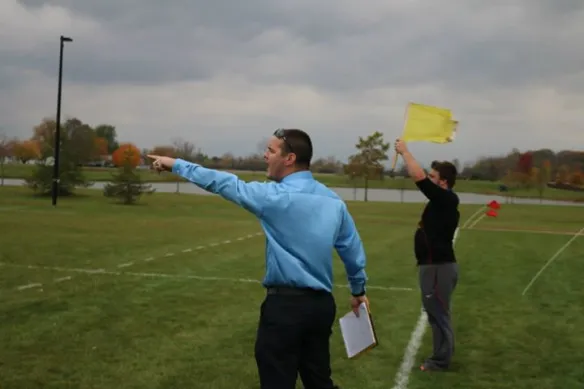
Biggest hardships/issues?
The hardest part about being a coach is separating yourself from the team in order to be able to make the difficult decisions that a coach sometimes have to make.
A secondary hardship I see as a coach is finding time to get everything done. I’m on campus from 7:30am until about 8-9 pm ever day during the season and managing my time becomes increasingly difficult as the semester goes on.
What does coaching mean to you?
Coaching for me is a way to give back to a sport that has given so much to me in the relatively short period of time that I’ve been playing it. The sense of community that rugby has to offer is unparalleled anywhere else, and this is a global phenomenon. I went to Ireland a couple years ago and someone recognized my Tradesmen jacket because our Tradesmen U19 team went on a tour there. We spent quite a while talking to each other about our rugby experiences. Being a coach allows me to stay a part of this community and bring more people into it. Being part of a rugby club is being a part of a family and as a coach, I can help grow this beautiful family.
What have you learned in the past year?
In the past year, I’ve learned that coaching and rugby will always be a piece of who I am. With as busy as I have been, I always found a way to make time for the teams. I’ve had a few people ask me if I would take some time off of rugby to focus on all of the other things I have going on, and I learned that I don’t have it in me to stop. This is my adrenaline rush and this is what I have committed my pride to. My teams are my family and I will always be there for them.
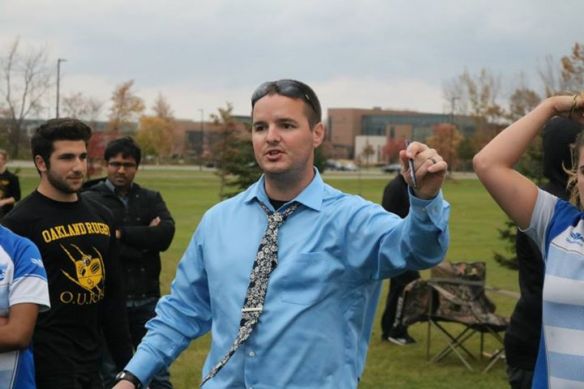
What are your plans for the next year with the club and where do you see the club going?
I have big plans for both teams. Within the next year, I want the guys to make it to the playoffs for the first time in the club’s history. We were edged out by Grand Valley this year, but I think we’re putting the pieces together and we have the ability to usurp Grand Valley’s place at the top of the conference. Within the next 5-10 years, I want to earn a spot in Division I and compete with teams like Michigan and Michigan State.
The girls already made a statement this year with their only losses coming at the hands of Indiana and Michigan who are perennially top programs in the country in Division I. In the next year, I expect them to continue to progress and become a top Division II team.
Are you involved with anything else on campus?
I’m actually involved with a bunch of things on campus besides the men’s and women’s rugby teams. I work for the tutoring center, I’m an SI for two classes this semester and I volunteer a bunch of tutoring hours when I can on top of all that. I recently joined the Society of Scholars which has been hosting structured study nights. I’m also in the Masters of Arts in Teaching program which has me student teaching at a nearby high school one full day a week.
If you are interested in keeping up with the Rugby Club, follow them on Facebook, Twitter, or go to their website here.

